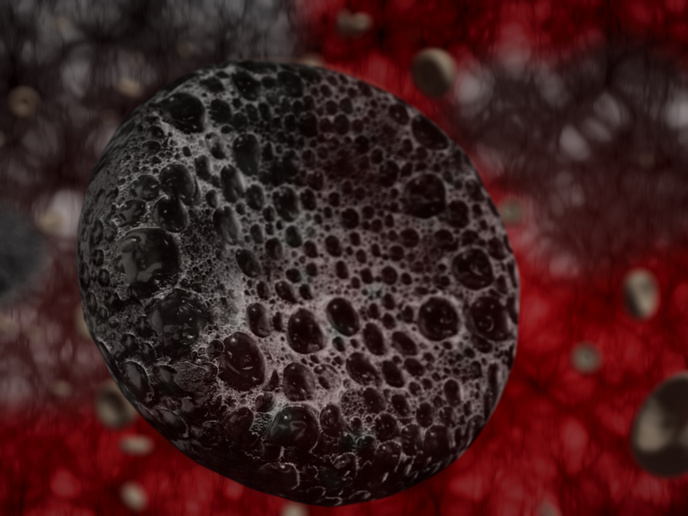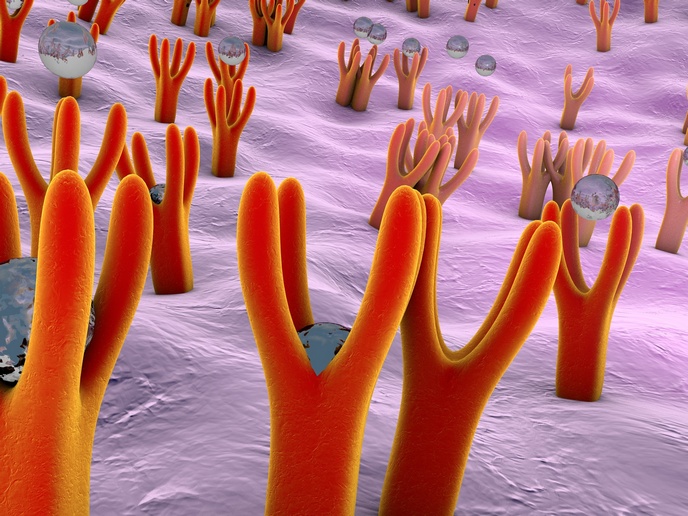Cell death secrets could improve inflammatory disease treatments
Pyroptosis, otherwise known as ‘programmed cell death’, describes actively induced cell death when cells decompose, releasing molecules including cell signalling proteins called cytokines. Beneficial to an organism during infection as it attracts immune cells to fight and eliminate pathogens, pyroptosis also removes the cells which would otherwise serve as hosts for pathogens, such as bacteria and viruses, to replicate. “However, when the activation of pyroptosis goes awry, for example with auto-inflammatory diseases, it poses a health risk,” notes Petr Broz(opens in new window), coordinator of the InflamCellDeath project, which was funded by the European Research Council(opens in new window). InflamCellDeath has revealed more about the last steps in the life of a cell, identifying the proteins involved in coordinating pyroptosis and how their activation is regulated. “Surprisingly, we found that even after pyroptosis gets to work, cells still have survival strategies, such as repairing the plasma membrane or preventing proteins from polymerising and causing damage,” says Broz.
Gasdermins: the toxic cell executioners
Gasdermins are the simple proteins that control induced pyroptosis. Human cells express six different gasdermins: -A, -B, -C, -D, -E and -F, each consisting of two parts – one induces pyroptosis, while the other binds the first, preventing it from killing the cell. To activate a gasdermin, both parts are separated by proteases(opens in new window), enzymes that cut proteins like a scissor. The best-studied is caspase-1, which detects microbial infection as part of a cell’s immune response. Once caspase-1 activates gasdermin-D (active in every cell in the body), by cutting it, the protein inserts itself into a cell’s plasma membrane forming a pore that causes molecule shedding, leading to pyroptosis.
Understanding cellular repair
InflamCellDeath explored various methods, ranging from purified protein studies in vitro and in cells, to validating results in animal models undergoing bacterial infections. One of the first studies looked at whether cells were irrevocably doomed after the formation of gasdermin pores. “We found that cells could repair damaged membrane, including the gasdermin pores, by packaging the damaged area into vesicles(opens in new window) to be expelled,” explains Broz. Expanding on these findings, researchers have since shown that cells can form gasdermin pores(opens in new window) to release cytokines, before resealing their membrane again. Studying the activation of gasdermins as part of antibacterial host defence, the team also showed that gasdermins -D and -E, helped fight Yersinia infections(opens in new window), the bacterial source of the plague. “Intriguingly, results indicated that during infection these gasdermins assumed the same function in different cell types, -D activated in white blood cells called macrophages(opens in new window) and -E in white blood cells called neutrophils(opens in new window),” adds Broz. Finally, the team structurally characterised a recently identified protein called ninjurin-1 (NINJ-1), which forms long filaments to enhance destruction of the plasma membrane after gasdermin pores are formed. “We identified the molecular structure of these filaments, showing that they can form large lesions in membranes, 10-20 times larger than gasdermin pores,” says Broz.
Finding new ways to block debilitating inflammation
The modern Western lifestyle, typically involving calorie-heavy diets, is now a major driver of diseases such as type 2 diabetes. As many are associated with inflammation triggered by the NLRP3 inflammasome, inhibiting its activation could offer powerful new treatments. InflamCellDeath’s findings could contribute to these efforts. “Knowing how pyroptosis is regulated when gasdermins get out of control, is important for the multitude of auto-inflammatory diseases and also for chronic inflammatory disease such as gout or atherosclerosis,” remarks Broz. The team are now working to further validate their findings in animal models of inflammatory disease prevalent in humans.







